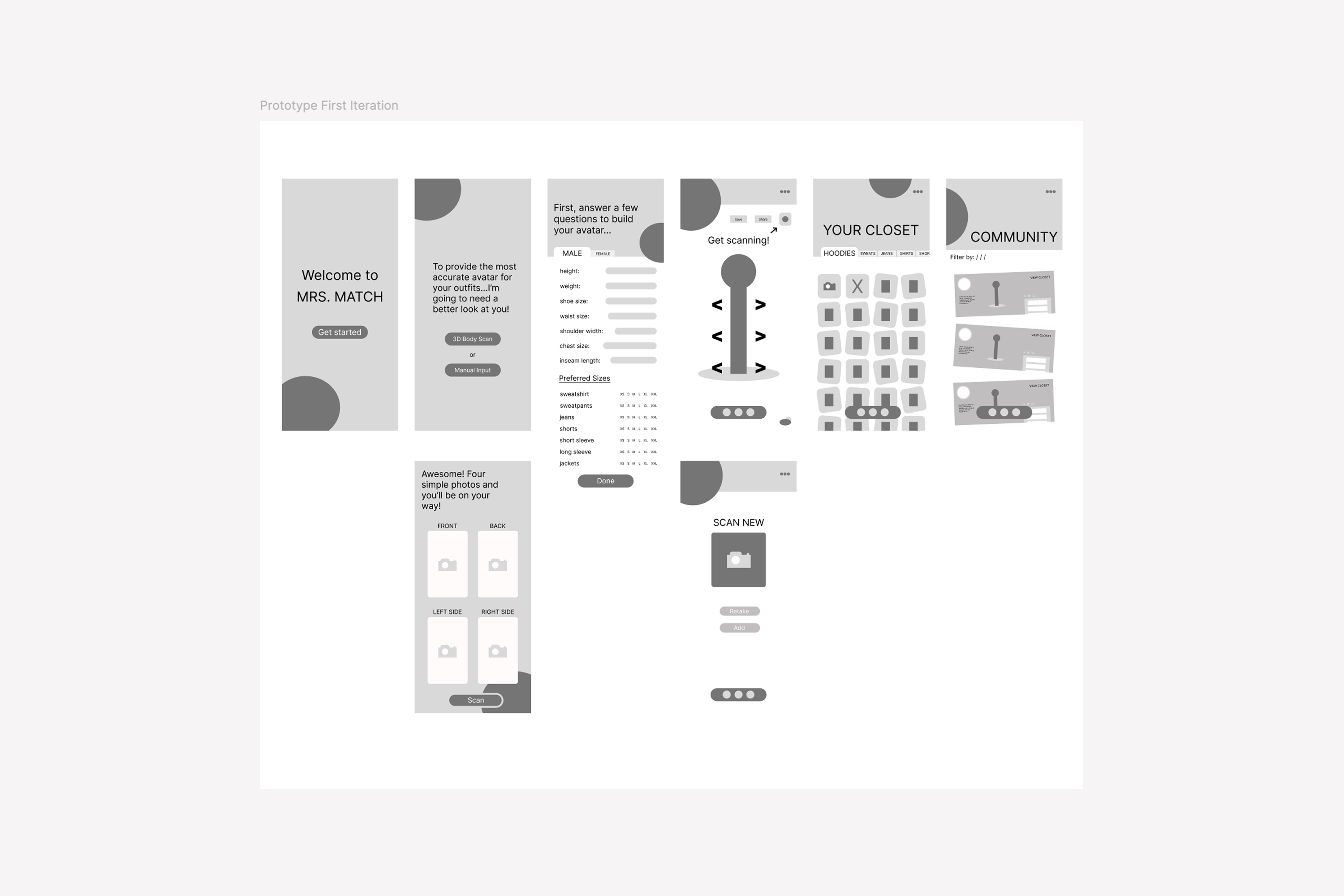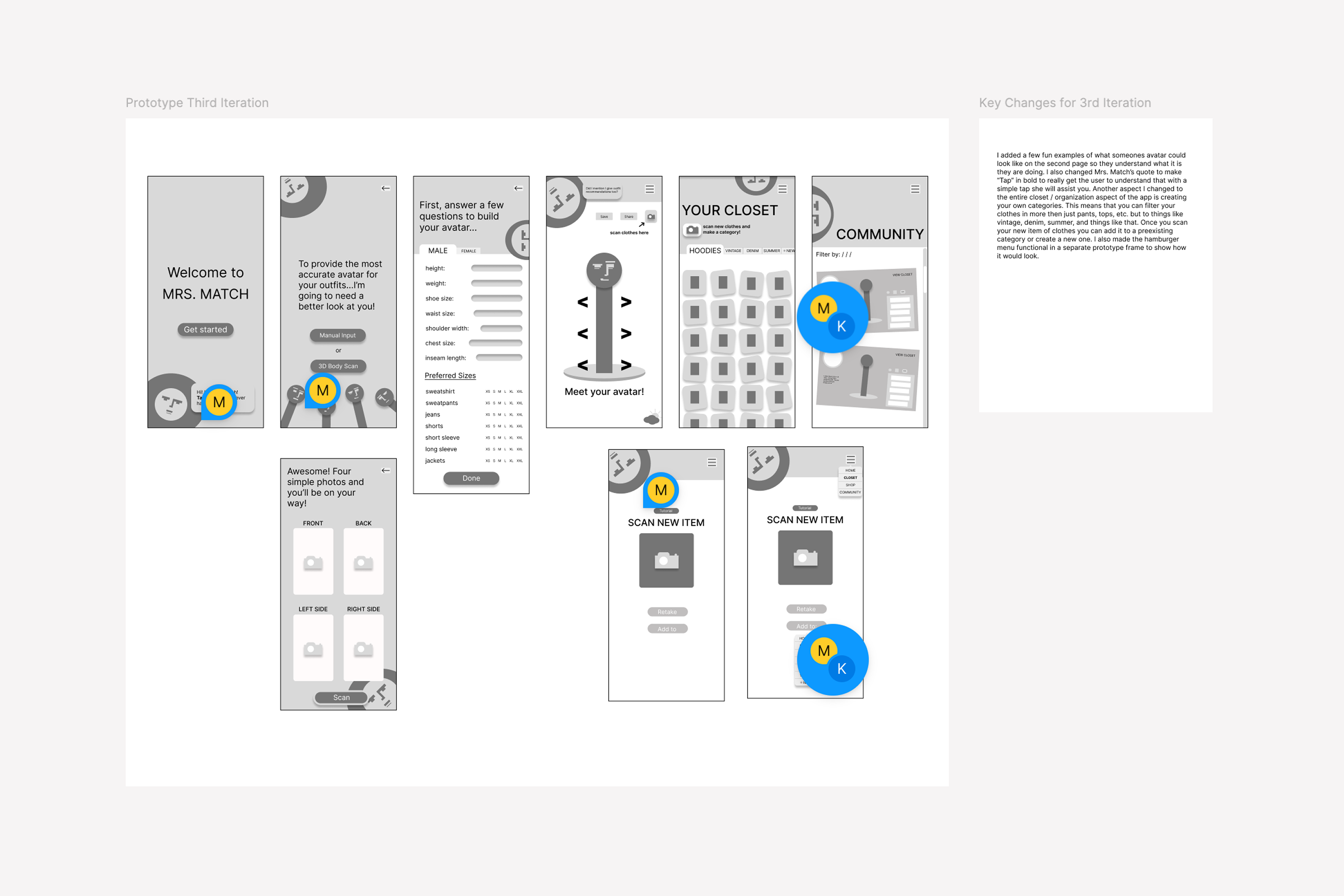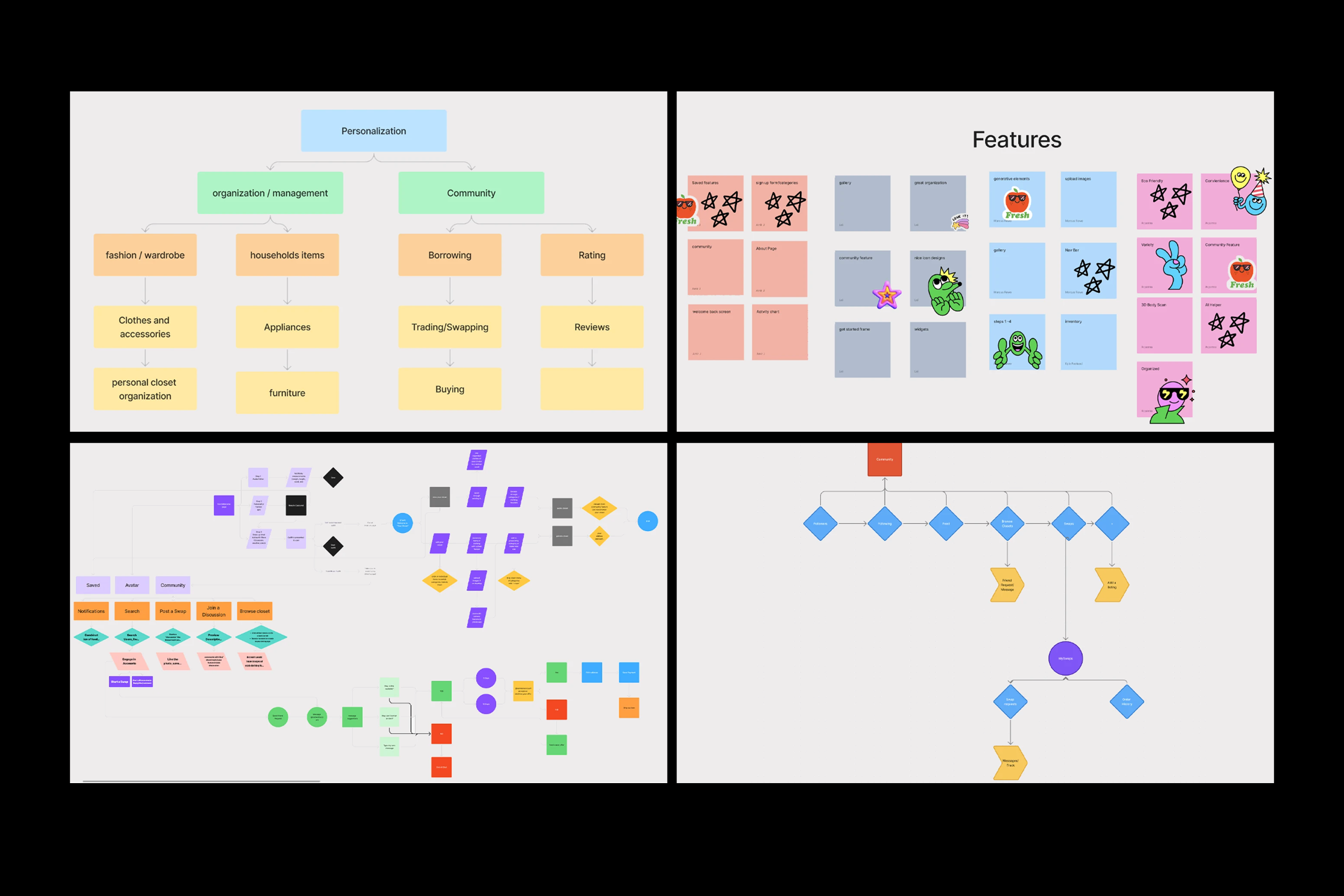Interaction II
This course advances students’ skills in interaction design through user-centered, research-driven projects that emphasize empathy, problem solving, and collaboration. Students design across digital platforms such as apps, email marketing, and web-based prototypes while developing branding, communication, and presentation competencies. Emphasis is placed on prototyping, testing, and documenting the design process, with the goal of producing thoughtful, professional, and engaging user experiences while thinking beyond commercial placements.
Speculative Service
Students identify an unmet need and design a speculative service that addresses it. Beginning with competitor analysis, sketches, and paper prototypes, they test their ideas with users, document findings, and refine their concepts into digital prototypes in Figma. Emphasis is placed on research, iteration, and user-centered design, with outcomes documented in a portfolio-ready case study.




Collaborative Synthesis
Students merge their individual speculative service concepts into team-based interactive systems. Through shared task flows, integrated wireframes, and collaborative critique, they identify overlaps and touchpoints to create a unified product. The project emphasizes teamwork, problem-solving, and consistent interaction design across multiple features.
Students merge their individual speculative service concepts into team-based interactive systems. Through shared task flows, integrated wireframes, and collaborative critique, they identify overlaps and touchpoints to create a unified product. The project emphasizes teamwork, problem-solving, and consistent interaction design across multiple features.




Product Prototype
Students simulate a speculative service as a polished product. Each student refines one core feature from their group’s work, names the service, and builds a design library to establish brand identity. They then create high-fidelity prototypes and extend the service into marketing assets, highlighting their feature while considering additional features designed by their former teammates.
Students simulate a speculative service as a polished product. Each student refines one core feature from their group’s work, names the service, and builds a design library to establish brand identity. They then create high-fidelity prototypes and extend the service into marketing assets, highlighting their feature while considering additional features designed by their former teammates.






Digital Dozen
Returning to independent work, students design a digital zine consisting of twelve entries that reinterpret a resource of their choice, such as astrology, field guides, advice columns, or cookbooks. Working with constraints of format, typography, and rhetorical mode, students explore how design choices influence meaning. The final zine is published online, accompanied by an artist statement reflecting on concept and execution.
https://whatsinside.cargo.site/
https://12affirmations.cargo.site/
https://theconspiracycircuit.cargo.site/
Returning to independent work, students design a digital zine consisting of twelve entries that reinterpret a resource of their choice, such as astrology, field guides, advice columns, or cookbooks. Working with constraints of format, typography, and rhetorical mode, students explore how design choices influence meaning. The final zine is published online, accompanied by an artist statement reflecting on concept and execution.
https://whatsinside.cargo.site/
https://12affirmations.cargo.site/
https://theconspiracycircuit.cargo.site/



